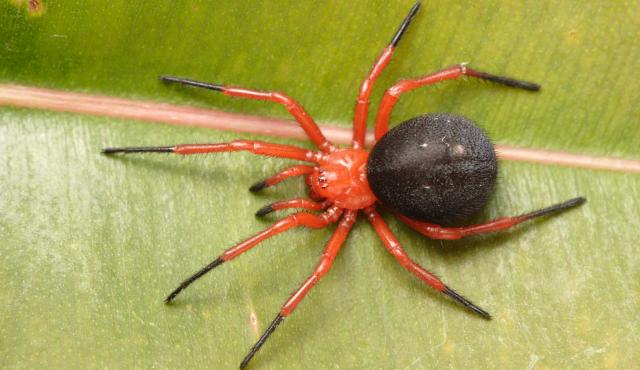A range of teacher professional learning programs will be developed to accompany the Biodiversity of the Western Volcanic Plains online outreach...

Red and Black Spider
Ambicodamus crinitus
During daylight hours In summer, males leave their web and wander in search of females. The egg case looks woolly and is held in the web. The web consists of a few strands built under bark, stones or logs.
| Details | Description |
| Type | Invertebrate |
| Group | Arachnid - Spider |
| Identifying Characteristics | |
| Distinctive Markings | Bright red body and red and black legs. |
| Diet | Carnivore. |
| Habitat | Lives on or close to the ground. |
| Native Status | Native to Australia |
| Bites/Sting | Despite the red colour of this spider its venom is not dangerous. At most, it may cause a local reaction around the bite site. |
| Taxonomy | |
| Phylum | Arthropoda |
| Class | Arachnida |
| Order | Araneae |
| Family | Nicodamidae |
| Genus | Ambicodamus |
| Species | crinitus |

Distribution maps indicate current and historic locations where species have been sighted.
Source: Atlas of Living Australia
| Conservation Status | |
| DEPI Advisory List | Not listed |
| FFG Act | Not listed |
| EPBC Act | Not listed |
The conservation status of species is listed within Victoria and Australia.
The Department of Environment and Primary Industry (DEPI) Advisory List consists of non-statutory advisory lists of rare or threatened flora and fauna within Victoria.
The Flora and Fauna Guarantee Act 1988 (FFG Act) lists threatened species in Victoria. Under the Act, an Action Statement is produced for each listed species.
The Environment Protection and Biodiversity Conservation Act 1999 (EPBC Act) is the Australian Government’s key piece of environmental legislation, listing nationally threatened native species and ecological communities.



